The Charm of Viterbo’s Historic Center
The historic center of Viterbo is one of the best-preserved in Italy. Surrounded by ancient walls, it encloses centuries of history, art, and everyday life. Walking through its streets means traveling through different eras — from Roman remains to Gothic architecture, from Renaissance palaces to Baroque squares.
Every stone here has a story to tell. The peperino rooftops, the towers, and the flower-filled courtyards make the heart of Viterbo an intimate, authentic place — far from the crowds, yet full of atmosphere.
Gates and Walls: The Entrance to the Ancient City
The center is still surrounded by perfectly preserved medieval walls. The main gates — Porta Romana, Porta Fiorentina, and Porta Faul — mark the entrance to the oldest part of town. From here, you enter a maze of alleys that open into quiet squares, carved fountains, and unexpected views.
One of the most scenic routes leads from Porta Faul to Piazza San Lorenzo, home to the Papal Palace, the symbol of the city. The path winds gently uphill through stone arches — perfect for a leisurely walk, especially at sunset.
The Most Beautiful Squares
The historic center of Viterbo is dotted with many squares, each with its own personality.
-
Piazza del Plebiscito, also known as Piazza del Comune, is the administrative heart of the city, with the Palazzo dei Priori and 17th-century frescoes depicting the history of Tuscia.
-
Piazza della Morte is smaller and more romantic, featuring a Gothic fountain and cozy spots for an aperitivo.
-
Piazza San Lorenzo, dominated by the Papal Palace and the Cathedral, is the most monumental and represents Viterbo’s deep connection with its papal past.
Each square is like a small stage, where city life moves slowly between cafés, artisan shops, and local markets.
What to See in the Historic Center
Beyond its squares, the center hides monuments and landmarks worth discovering at a relaxed pace.
-
The San Pellegrino Quarter is an authentic medieval district and a must-see stop.
-
The Civic Museum, housed in the former convent of Santa Maria della Verità, preserves artworks and artifacts that tell the city’s story.
-
The Cathedral of San Lorenzo, with its peperino-and-marble bell tower, and the nearby Loggia of the Popes offer one of the most iconic views of Viterbo.
-
The Church of Santa Rosa, dedicated to the city’s patron saint, is the starting point of the famous “Macchina di Santa Rosa,” the event that every September lights up the night with a 30-meter-tall illuminated tower.
Strolling through the center also means discovering craft workshops — small studios of ceramists, goldsmiths, and local artists keeping Tuscia’s traditions alive.
Where to Eat in the Historic Center
Viterbo’s cuisine is simple, rustic, and full of genuine flavors. In the center, you’ll find trattorias and osterias serving local dishes such as gnocchi alla viterbese, acquacotta, lombrichelli al sugo, and grilled local meats. Among the wines, Grechetto and Aleatico di Gradoli stand out — perfect companions to the region’s dishes.
Many restaurants are set inside historic buildings with stone vaults, creating a warm and authentic atmosphere. In summer, the squares fill with outdoor tables where you can sip a glass of local wine and watch the city come alive.
Where to Stay: The B&B in the Heart of Viterbo
To truly experience the historic center, the best choice is to stay within the city walls, in a place that reflects its soul. B&B Viterbo Antica, at Via San Tommaso 73, lies in the heart of the San Pellegrino district, just steps away from the main attractions.
The rooms and apartments are housed in period buildings with exposed stone, wooden beams, and carefully curated decor. Breakfast, prepared with homemade cakes and local products, is served directly in your room — a peaceful and homely start to the day.
From here, you can easily explore the entire center on foot, while the Terme dei Papi are only a few minutes away by car. It’s the ideal solution for those who want to experience the city from within — at its own rhythm and pace.
Experiences Not to Miss
Beyond its monuments, the center of Viterbo offers unique experiences throughout the year:
-
Antiques Market – every third weekend of the month, in the main squares.
-
San Pellegrino in Fiore – in spring, when balconies and courtyards bloom with plants and colors.
-
The Macchina di Santa Rosa – on September 3rd, when the city becomes a grand stage of light and faith.
-
Themed Guided Tours – exploring the city’s underground passages and fascinating legends.
Each season has its own charm — Viterbo is quiet in winter, lively in summer, fragrant in spring, and golden in autumn.
A Center to Be Experienced Slowly
The historic center of Viterbo is not something to be “seen” — it’s something to be lived. It invites you to slow down, notice the details, pause for a coffee or a photograph. Its compact size makes it perfect to explore on foot, unhurried, letting curiosity lead the way.
Every alley leads to a new discovery, every square tells a story, and every night spent within its walls preserves a touch of the Middle Ages still alive in its stones.
Visiting Viterbo means connecting with an authentic city where the past is not just memory but part of everyday life. Its historic center is a small suspended world — full of light, sounds, and ancient scents. And for those who truly wish to feel part of this atmosphere, B&B Viterbo Antica is the ideal starting point: welcoming, central, and immersed in the quiet beauty of a city that has never stopped telling its story.




